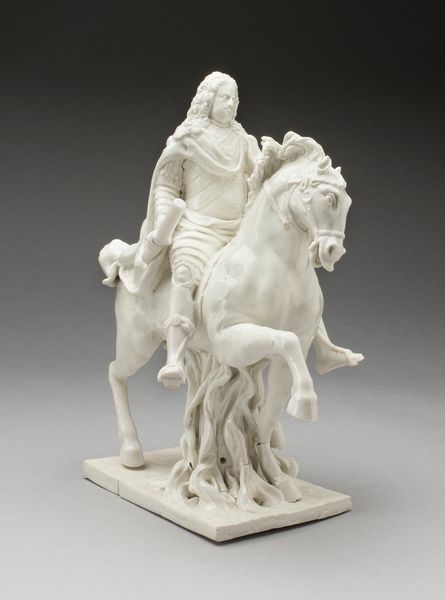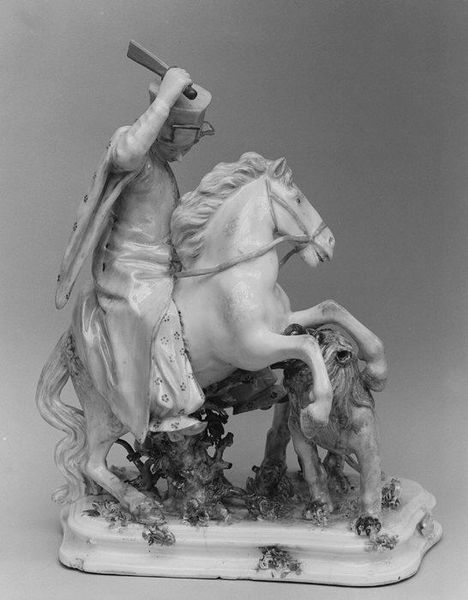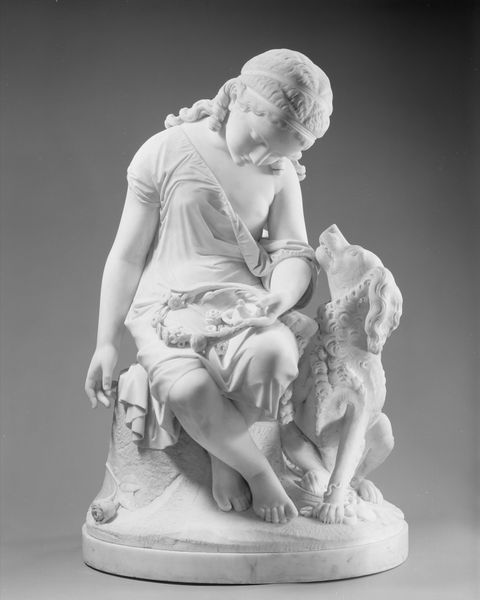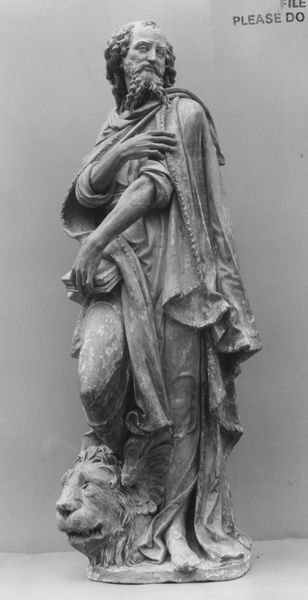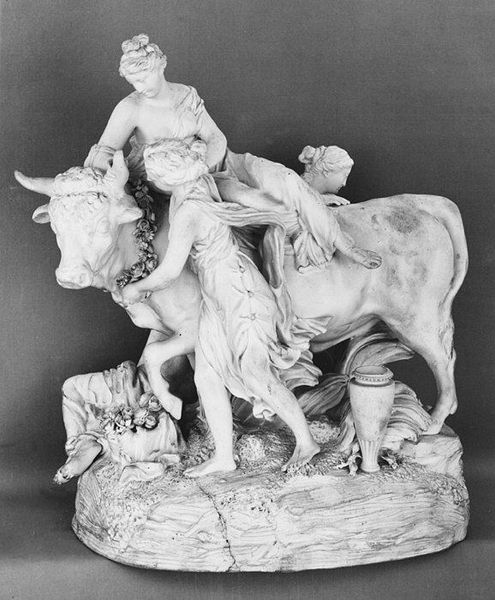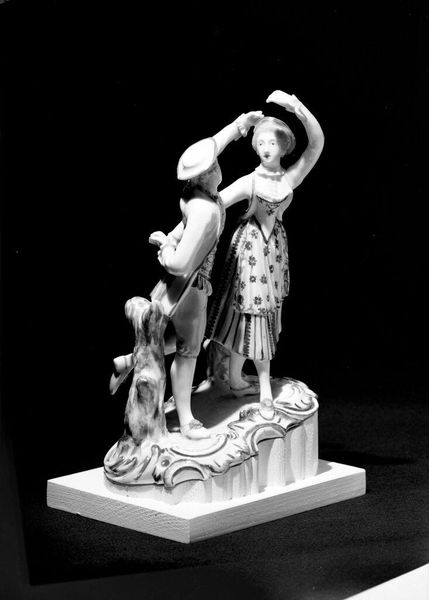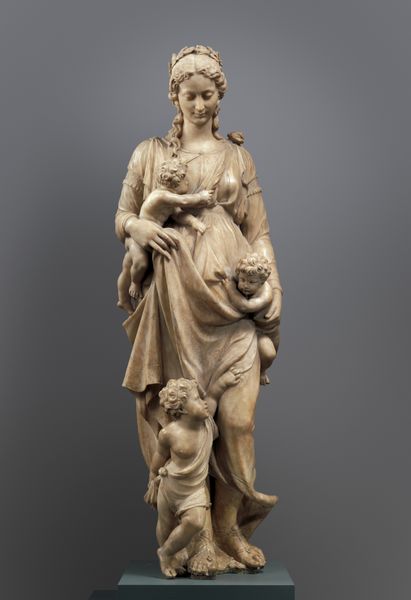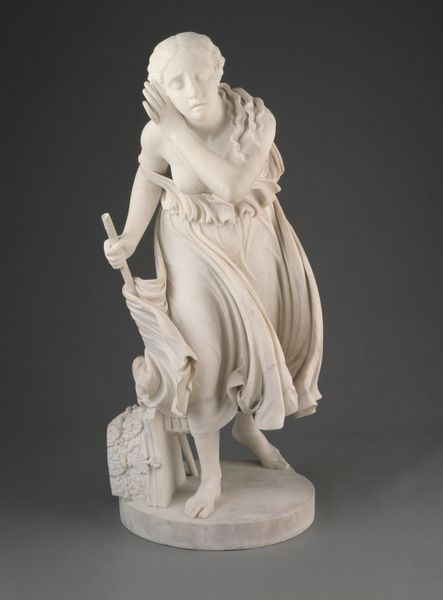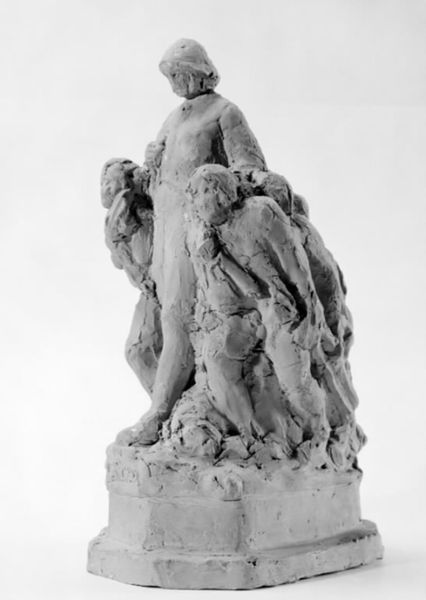
ceramic, porcelain, sculpture
#
allegory
#
sculpture
#
digital architecture
#
ceramic
#
porcelain
#
figuration
#
sculpture
#
history-painting
#
decorative-art
#
rococo
Dimensions: Height: 5 5/16 in. (13.5 cm)
Copyright: Public Domain
Editor: This is a porcelain sculpture entitled "Europe," created by Mennecy between 1750 and 1765. It’s currently housed at the Metropolitan Museum of Art. What strikes me is its elegant simplicity. It's entirely white, featuring a female figure with a horse. What do you see in this piece from a formalist perspective? Curator: I am drawn to the interplay of textures. Notice how the smooth, almost liquid quality of the glaze contrasts with the delicate, almost lace-like details in the drapery. The figure's posture creates a dynamic tension – poised yet restrained. Consider also how the artist uses asymmetry. The horse's reclining posture counters the upright figure, lending stability to the composition. Are you seeing something similar? Editor: Yes, definitely the contrast in textures! And now that you point it out, the asymmetry adds a certain visual interest that I hadn't fully appreciated. The way the light plays on those curves, too, it is striking. Curator: Precisely. Focus on the semiotic language in the artist’s strategic emphasis of forms and texture to evoke a specific narrative without relying on other context, outside of this aesthetic relationship between subject and perceiver. Now, where does this understanding lead us? Editor: It shifts my thinking away from wondering *what* it means, and more towards appreciating *how* it means. The sculpture itself, in its form, material, and composition, communicates the ideas effectively without the support of historic interpretation. Thanks! Curator: Indeed. And that careful balance – of line, form, and texture – yields a viewing experience that is both engaging and rewarding, independent of external knowledge. We both grew from considering it more closely.
Comments
No comments
Be the first to comment and join the conversation on the ultimate creative platform.

